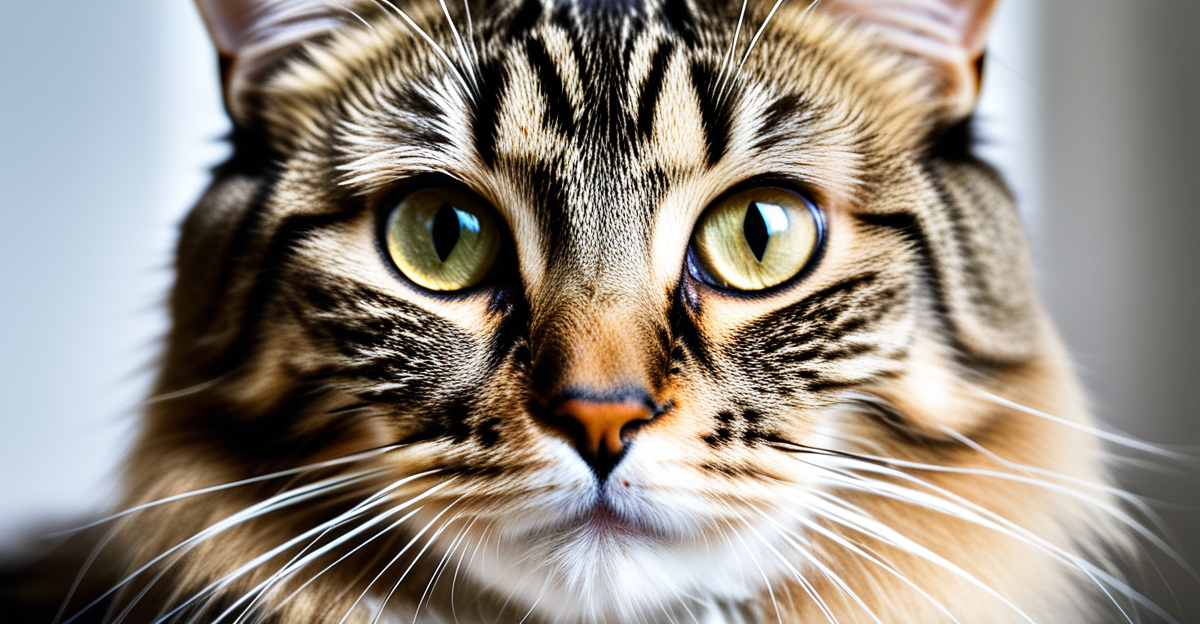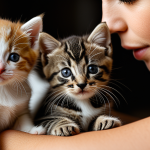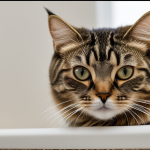Understanding Cataracts in Senior Cats
Cataracts in cats present as a cloudiness in the lens of the eye, often developing with age. This condition can obscure vision, affecting overall senior cat health. In older cats, the natural aging process may lead to the formation of cataracts due to changes in lens proteins. Identifying signs of cataracts early is crucial; cloudy eyes, clumsiness, and hesitation in walking may indicate visual impairment.
Recognising signs of cataracts is essential for effective intervention. Pet owners should note any changes in their cat’s behavior, as it might point to vision reduction. Observing the tell-tale sign of ‘cloudiness’ in your cat’s eyes warrants professional attention. Cataracts typically develop slowly, gradually diminishing the clarity of the vision, making early detection vital.
Also to read : Creating a Safe Haven for Your Visually Impaired Cat: Expert Tips and Home Adjustments
The importance of early detection cannot be overstated. Addressing cataracts at the early stages could significantly improve treatment outcomes. With prompt veterinary care and regular check-ups, the progression can often be managed more effectively. Maintaining a vigilant eye on your feline friend’s vision can ensure she continues to navigate her surroundings safely and comfortably, underscoring the importance of proactive care in managing senior cat health.
Diagnosis of Cataracts
Detecting cataracts in cats early can significantly affect their management. Veterinary eye exams play a central role in the cataract diagnosis process. During such exams, veterinarians thoroughly assess cat eye health, looking for tell-tale signs like lens cloudiness and vision impairment. These assessments enable timely identification of potential cataract development, allowing for more effective intervention and prevention of further complications.
Additional reading : Comprehensive Guide to Nurturing Orphaned Kittens: Pro Tips for Bottle-Feeding and Ensuring Robust Growth
Veterinary Assessment
Veterinarians evaluate a cat’s eyes using special techniques to observe the lens and identify any abnormalities. These examinations often involve tests like slit-lamp biomicroscopy, which magnifies and illuminates the eye’s structures. This step ensures an accurate appraisal of the condition and informs subsequent treatment decisions.
Diagnostic Tools
Common tools used in diagnosing cataracts include ophthalmoscopes and retinoscopes. These instruments help veterinarians determine the cataracts’ extent and impact on the cat’s vision. Identifying cataracts can lead to early intervention and improved feline health care outcomes.
Importance of Regular Check-Ups
Regular health check-ups should not be overlooked. Senior cats, in particular, benefit from frequent evaluations that catch changes in eye health promptly. Routine assessments can assist in monitoring cataract development and adjusting care strategies as needed, ultimately supporting sustained cat health.
Treatment Options for Cataracts
When it comes to cataract treatment for cats, the focus is on maintaining feline health care and visual quality. The severity of the cataract largely determines the treatment options available. For mild cases, non-surgical interventions, like anti-inflammatory eye drops, can help in managing symptoms and slowing the progression. However, these do not cure the cataracts.
Surgical removal is often the most effective solution. Surgery for cats is recommended when the cataracts severely impair vision or affect the cat’s quality of life. This procedure involves replacing the clouded lens with an artificial one, significantly improving vision. It’s important to know that not every cat is a suitable candidate for surgery; veterinary evaluation is crucial to determine eligibility.
Post-treatment care is essential for a successful recovery. Owners must follow vet-prescribed instructions closely, ensuring medication is administered correctly and follow-up appointments are adhered to. Cats may need to wear a protective collar to avoid eye injury during healing. Monitoring your feline friend’s behaviour is crucial; any signs of discomfort or changes in vision warrant immediate professional attention. The combination of surgery and diligent post-operative care fosters the best possible outcomes for your senior cat’s eye health.
Preventive Measures for Eye Health
Taking proactive steps in eye care for cats is vital for preserving optimal vision, especially in their senior years. A balanced diet rich in antioxidants can greatly benefit cat nutrition, promoting overall eye health. Omega-3 fatty acids and vitamins C and E are particularly helpful in maintaining the integrity of the lens, potentially reducing the risk of cataracts.
Environmental factors also play a crucial role in a cat’s eye health. Ensuring your feline’s environment is secure, with reduced exposure to harsh sunlight or injury risks, can mitigate issues associated with cataract development. Keeping a clean, hazard-free space for your cat helps prevent eye injuries and infections, which can exacerbate vision problems.
Establishing a regular eye care routine is another preventive measure. Regularly inspect your cat’s eyes for any signs of irritation or cloudiness. Cleaning around the eyes with a damp cloth and maintaining proper eye hydration through specially formulated drops can support eye health. Monitoring and caring for your cat’s eyes diligently can foster longevity not only in vision but also in their overall well-being, ensuring a happy, healthy life.
Expert Insights on Cataract Care
Navigating cataract care requires informed veterinary advice and insights tailored to your cat’s specific needs. Veterinary ophthalmologists emphasize the importance of proactive care in managing cataracts effectively. They stress the necessity of a structured plan involving regular check-ups and tailored treatment courses.
An expert opinion often recommends that keeping a close watch on your cat’s behaviour can detect cataract signs early. Changes such as bumping into objects or reluctance to move in dim light can indicate impaired vision, prompting the need for timely diagnostic exams. Moreover, specialists suggest maintaining a detailed history of your cat’s health to facilitate accurate assessments during veterinary visits.
Crafting a proactive care plan involves integrating regular health assessments with lifestyle adjustments. This includes keeping your home environment safe from potential hazards and ensuring your cat’s diet is optimized for eye health. Proactive measures extend to being vigilant about administering prescribed medications and maintaining consistent communication with your vet.
When seeking further veterinary assistance, resources like specialized clinics and online platforms offer invaluable support. These channels can guide you to expert practitioners and provide communities where pet owners share experiences, fostering informed decision-making for your cat’s health.
Resources for Pet Owners
Navigating cataract care for your furry companion can be daunting, but knowing the right resources can make a difference. Finding a veterinary ophthalmologist is crucial for specialized care. Begin by consulting your primary vet for referrals. They can recommend specialists well-equipped to handle cataract diagnosis and treatment. Checking credentials and experience ensures you select a qualified expert.
Additionally, having access to effective eye care products is beneficial. Products like specially formulated eye drops can aid in managing minor irritations and promoting overall eye care for cats. Your veterinarian can suggest the most effective options tailored to your cat’s specific needs.
Lastly, don’t underestimate the value of online support communities. These platforms offer rich resources where pet owners share experiences, advice, and personal tips on managing cat health issues. Engaging in these forums not only provides emotional support but also practical insights, growing your understanding of your senior cat’s journey with cataracts. Prioritizing informed senior cat health decisions can lead to a more comfortable and healthier life for your feline friend.










